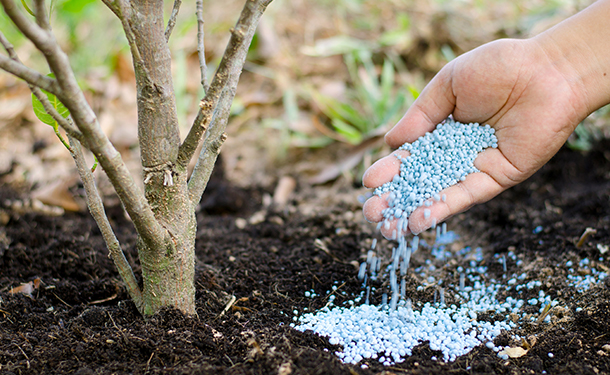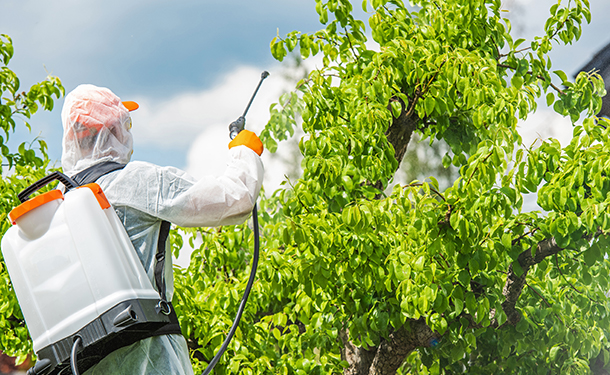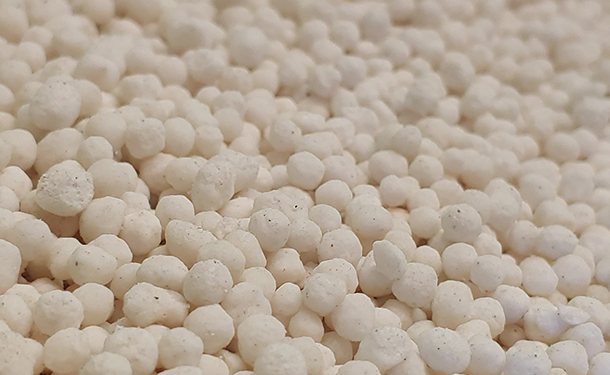Need help determining when and how to fertilize your trees? Keeping your trees adequately fertilized will help them reach maturity, thriving and healthy.

thetreecareguide.com gathered the following essential information and tips to help keep your trees properly fertilized and flourishing on your property.
When Should I Fertilize My Trees?
When fertilizer is required, it should be applied sometime between late fall through early spring. Fertilize after the first hard freeze in October or November but before the soil freezes in December for the best results. During this window, soil temperature still allows roots to absorb minerals (stored for growth the following spring).
Fertilizers applied during winter (when the ground is frozen) may be lost to leaching, surface erosion, or runoff. Early March or April (before new growth begins) is another excellent time to fertilize trees. Fertilizing during summer months may stimulate late growth that cannot harden before being damaged by freezing fall and winter weather. Consider the following signs when deciding to fertilize your trees:
- (Nitrogen Deficiency) Yellowing or chloritic older leaves
- (Iron Deficiency) Iron chlorosis is typically a soil pH problem. Iron is less available when the soil pH is above 7.0
- (Magnesium Deficiency) Chlorosis of older leaves and short, unhealthy new growth
Other conditions causing chlorosis include:
- Poor soil drainage
- Over-watering
- Improperly or over-mulching
- Planting too deeply (burying the root flare)
- Root nematodes
- Root injury (lawnmower, foot traffic, soil compaction, etc.)
Tip: Newly planted trees should only be lightly fertilized (or not at all) until they are well-established. After their first growing season, young, rapidly growing trees should be fertilized to promote their establishment and support their growth. Mature, well-established trees may only require fertilization every other year to maintain healthy foliage, color, and vigor.
There is a difference between fertilizers and amendments. Fertilizers provide trees with essential nutrients (soluble salt compounds), affecting plant health and growth. Soil amendments indirectly affect trees by improving soil structure and its ability to store and deliver water and nutrients.
Fertilizer Application Methods
These are various methods to fertilize trees that are deficient:
Liquid Root Feeding – Commercial tree and landscape services often use this application method. Nutrients are dissolved in water and soaked into the soil.
Foliar Application – Trees can absorb nutrients through their foliage. Multiple liquid fertilizer brands attach to a garden hose for foliar application. Foliar fertilization is an excellent way to compensate for chelated iron in trees suffering from iron chlorosis. Large shade trees are not typically fertilized using this method.

Tip: When using foliar fertilizer application, follow the manufacturer’s directions on the label is crucial. Excessive fertilizer concentrations (especially when applied during hot periods can burn the tree’s foliage).
Surface Broadcasting – The easiest, most used, and most cost-effective way to fertilize large trees is to broadcast granular fertilizer on the soil surface. Broadcast the fertilizer on the area under the tree (beginning near the trunk and radiating out to the drip line). Irrigate the area well after fertilizing (if rainfall is not expected).
Tip: Avoid fertilizing if heavy rain is forecasted or the ground is still frozen.
Fertilizer Spikes – This is a popular method used by property owners. Spikes made from compressed fertilizer are hammered into the soil, and this method works best when the soil is soft and moist.
Tip: Follow the manufacturer’s instructions on the product label for correct spacing and quantities.
What is the Best Fertilizer for Trees?

Turf fertilizers typically work well for trees because they contain the desired ratio of nitrogen, phosphorus, and potassium. Some of that nitrogen is slowly released to the roots.
Mulching a tree’s root zone with organic mulch (hay, bark chips, pine needles, etc.) helps regulate soil moisture and temperature while slowly releasing nutrients to the soil as it decomposes.
Tip: Working or gently tilling compost into the soil will enrich it but adds more soil structure than nutrients.
Do Trees Really Need Fertilizer?
Yes. Fertilizer helps trees grow and remain healthy. Trees are resilient, but soil nutrient deficiencies can cause their decline. Fertilization gives trees vital nutrients, supports their growth, and significantly contributes to tree health and vitality.
Note: In forested land, fallen leaves accumulate and decompose, recycling nutrients naturally occurring in the tree’s habitat. Fertilization attempts to compensate for nutrients taken from a tree’s root zone by leaf removal.
Can Trees Be Over-Fertilized?
Yes. Tree roots exert force to extract water and nutrients from the soil. Excessive fertilization causes them to shrivel, making it challenging to adequately perform their task. Root rot and disease susceptibility can also occur. Over-fertilization symptoms include the following:
- Fertilizer “crust” on the soil surface
- Yellowing, drooping, and wilting of lower foliage
- Browning leaf tips and margins
- Defoliation
- Slow or no growth
Tip: The best way to solve an over-fertilization case is to leach excess nutrients from the soil. Excessive watering can slowly flush out the site. You can also remove dying or wilting foliage to reduce fertilizer remnants in the tree itself.
Fertilizing Trees
In this article, you discovered crucial information and tips for properly fertilizing your landscape trees, helping them stay healthy and resist insect infestation and disease.
Knowing when and how to fertilize your trees will give them the nutrients needed for excellent growth and supercharge their natural resistance to invasive insects and debilitating pathogens.
Under-fertilizing or over-fertilizing trees can severely damage their root systems, leaving them in decline, causing damage when they fall on your property.
Sources:
extension.missouri.edu/publications/g6865
extension.umd.edu/resource/fertilizing-trees-and-shrubs-and-nutrient-deficiency-symptoms
mgeldorado.ucanr.edu/files/170168.pdf